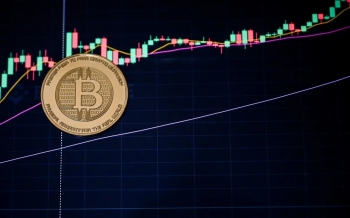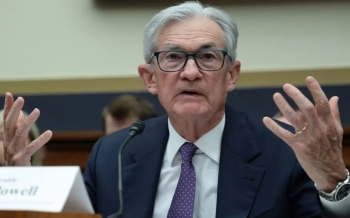Gold Slips Below the Key $4,000 Mark as U.S. Labor Market Weakens
Gold prices retreated sharply on Thursday, breaking below the key $4,000 per ounce psychological level, as fresh U.S. labor market data revealed signs of economic slowdown and rising recession fears. The decline comes after weeks of strong gains supported by expectations of further Federal Reserve rate cuts, which have recently begun to fade amid mixed economic signals.
According to newly released data, U.S. job cuts surged in October, with more than 153,000 layoffs announced, marking the highest October total since 2003. The spike, driven by widespread corporate restructuring and the rapid adoption of artificial intelligence technologies, reflects growing uncertainty in the employment landscape. Many firms are reducing headcount to adjust to new operational models and tighter financial conditions.
This jump in job losses — up more than 180% month-on-month and 175% year-on-year — highlights a labor market under pressure. Analysts warn that while the U.S. economy remains resilient, the slowdown in job creation to its weakest pace in years could weigh heavily on consumer spending and investor sentiment.
Compounding the challenge, the ongoing U.S. government shutdown has suspended the publication of official labor and inflation data, forcing investors and policymakers to rely more heavily on private-sector indicators to assess economic conditions.
Private payroll data from ADP, for instance, showed a modest gain of 42,000 new jobs in October, after two consecutive months of decline. While this figure suggests the market has not yet entered full contraction, it also confirms a clear deceleration in hiring momentum. The divergence between the ADP data and broader layoff reports adds to investor caution and overall market volatility.
On the monetary policy front, the Federal Reserve cut interest rates last week, but Chair Jerome Powell signaled that it might be the final reduction for 2025. According to FedWatch data, the market now sees a 63% probability of another rate cut in December — down from over 90% just a week earlier.
Lower interest rate expectations typically support gold prices since the metal offers no yield. However, as yields stabilize and the dollar strengthens, short-term pressure on gold is likely to persist.
At the time of writing, spot gold erased earlier gains and hovered near $3,980 per ounce, after touching $4,019 earlier in the session. December gold futures also slipped 0.05% to trade around $3,990 per ounce, reflecting cautious sentiment among traders.
In the broader metals market, silver rose 1.3% to $48.69 per ounce, platinum climbed 0.4% to $1,568.26, while palladium declined 0.8% to $1,407.41 per ounce.
Analysts at Point Trader Group noted that gold’s current pullback appears to be a technical correction rather than the start of a prolonged downtrend. They believe the metal remains fundamentally supported by macroeconomic uncertainty, geopolitical tensions, and a weakening labor outlook in the United States. The firm emphasized that sustained softness in U.S. economic indicators or renewed dollar weakness could restore bullish momentum for gold in the medium term.
According to Point Trader Group’s analysis, the key levels to watch are $3,950 as immediate support and $4,050 as the next resistance zone. A break above $4,050 could open the door for renewed upside momentum, while a drop below $3,950 may expose the market to further declines toward $3,900 per ounce.
In summary, gold remains caught between conflicting market forces — fading rate-cut expectations, rising economic risks, and shifting investor appetite for safe-haven assets. The coming weeks will likely hinge on upcoming U.S. inflation data, Federal Reserve minutes, and broader macroeconomic trends, which could determine whether gold reclaims the $4,000 level or continues to consolidate below it.
Point Trader Group concludes that despite short-term fluctuations, the long-term outlook for gold remains constructive as global markets adjust to slower growth, policy uncertainty, and persistent structural changes in the world economy.


 English
English
















